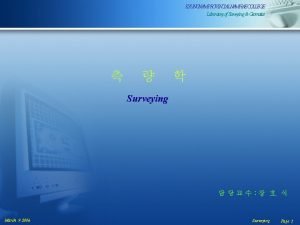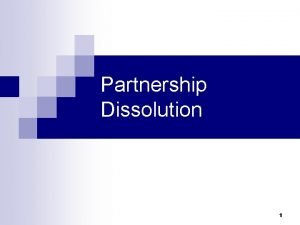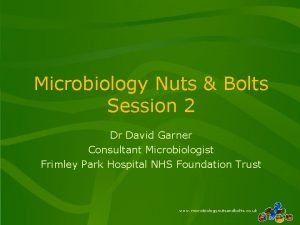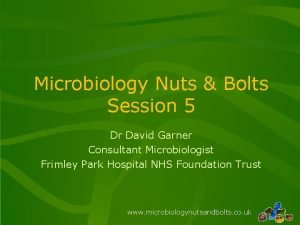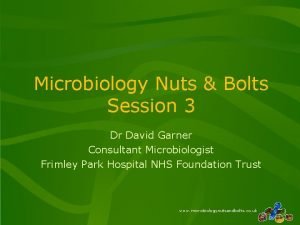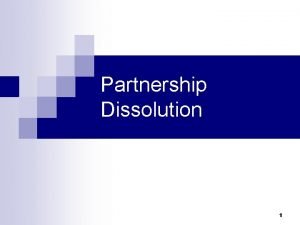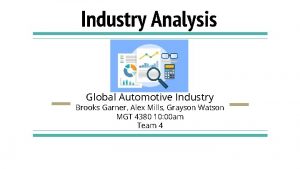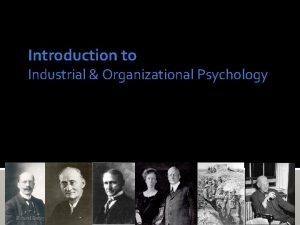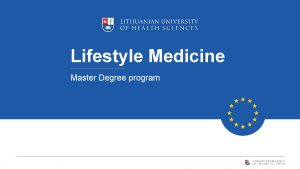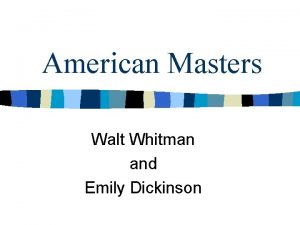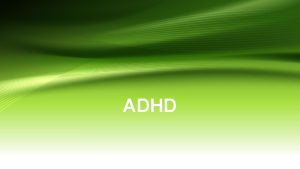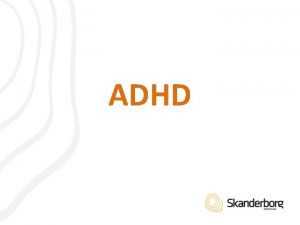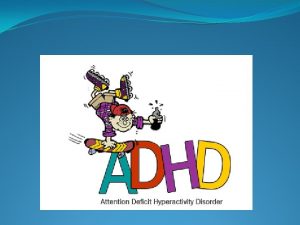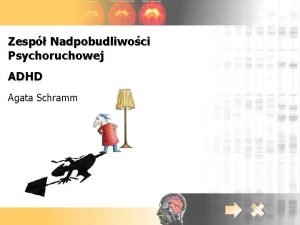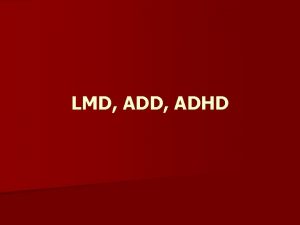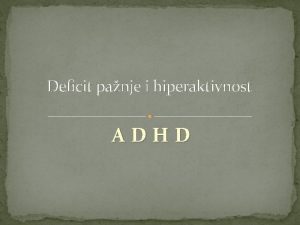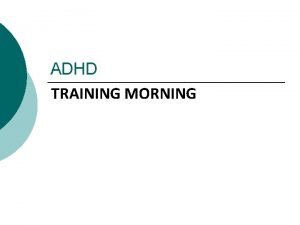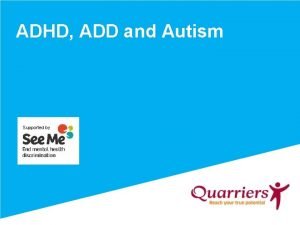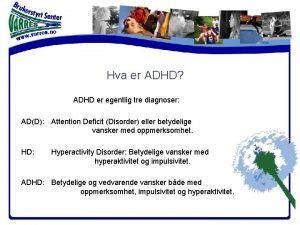Adult ADHD Delicia Garner March 25 2006 Masters



























- Slides: 27

Adult ADHD Delicia Garner March 25, 2006 Master’s Project Presentation

Adult Attention Deficit Hyperactivity Disorder Prevalence = 100 million adults n Imbalance of chemical messengers in the brain that results in difficulties: n Focusing n Organizing and prioritizing work n Filtering out or ignoring distractions n Thinking before action n Delaying gratification n

Childhood ADHD n n Common myth: that children with ADHD “grow out of it” But 65% of children diagnosed continue having symptoms into adulthood Most people know the problems that children with ADHD face – academic and behavioral trouble at school, difficulty making and keeping friends, and stressful family situations Few people are aware of serious consequences of Adult ADHD

Consequences of Adult ADHD n Adults with untreated ADHD are More than twice as likely to have been arrested n 78% more likely to be addicted to tobacco n Twice as likely to have been divorced n More than twice as likely to have dropped out of high school n Twice as likely to have held 6 or more jobs in the past 10 years n from: ADHD in Adults (A Guide to ADHD and Effective Treatment)

Recognizing Adult ADHD Constant disorganization, poor time management, and failure to plan ahead n Frequent forgetfulness, often losing things n Continual problems starting or finishing projects or tasks n Impulsive decision making, and saying things without thinking n Ongoing problems concentrating and paying attention n

Continued… Extreme restlessness or fidgetiness n Poor anger control n Difficulty keeping jobs n Martial problems and relationship issues n from: ADHD in Adults (A Guide to ADHD and Effective Treatment)

ADHD in Children and Adults The same, but different n Adult ADHD more difficult to recognize, which is why many adults remain undiagnosed n Core impairments of ADHD - inattention, hyperactivity, and impulsivity- remain the same n But the symptoms that result usually change as people get older n

Childhood Symptoms Versus Adult Hyperactivity Restlessness n Can’t sit still, always on n Can’t stay focused on the go one thing n Climbs or runs at n Is fidgety or impatient inappropriate times Physical Impulsivity n Does things that result in injuries Verbal Impulsivity n Says the “wrong thing” or speaks out of turn

Continued… n Has problems waiting one’s turn n Interrupts others excessively Inattention n Can’t pay close attention n Has difficulty in class or complete concentrating at work schoolwork and finishing tasks from: ADHD in Adults (A Guide to ADHD and Effective Treatment)

ADHD: A Genetic Link If a close family member has ADHD, then the patient is at an increased risk n Especially ask about parents, children and siblings n

Why so difficult to diagnose? Lack of guidelines for primary care providers n Lack of objectively verifiable tests n Diagnostic criteria structured more toward childhood diagnoses n High rate of media attention predisposing adults toward self diagnoses n Common comorbidities n Concern of schedule II drug abuse n

Clinical Presentation Criteria for ADHD are specified in the Diagnostic and Statistical Manual of Mental Disorders, fourth edition (DSM-IV) n DSM-IV describes 3 subtypes of ADHD n Predominately hyperactive n Predominately inattentive n Mixed type with symptoms of other 2 categories n

DSM-IV Criteria A for ADHD For diagnoses, 4 criteria must be met (Criteria A, B, C, and D) n Criteria A has 2 subgroups n Either subgroup 1 or subgroup 2 must be met in order for clinical diagnoses n

Subgroup 1 of Criteria A n Classic examples of inattention from subgroup 1 Often fails to give close attention to details or makes careless mistakes in work or other activities n Often has difficulty sustaining attention n Often does not seem to listen when spoken to directly n Often does not follow through on instructions and fails to finish duties in the workplace n Often has difficulty organizing tasks and activities n Often loses things necessary for tasks or activities n Often forgetful in daily activities n

Subgroup 2 of Criteria A n Classic examples of hyperactivity-impulsivity Often fidgets with hands or feet or squirms in seat n Often runs about or climbs excessively in situations in which it is inappropriate (in adolescents or adults, may be limited to subjective feelings of restlessness) n Is often "on the go" or often acts as if "driven by a motor" n Often talks excessively n Often blurts out answers before questions have been completed n Often interrupts or intrudes on others n

Criteria B, C, and D B. Some hyperactive-impulsive or inattentive symptoms that caused impairment were present before age 7 years. n C. Some impairment from the symptoms is present in two or more settings (e. g. , at school [or work] and at home). n D. There must be clear evidence of clinically significant impairment in social, academic or occupational functioning n

Criticisms of DSM-IV never been validated in adults n doesn’t include developmentally appropriate symptoms for adults n fails to identify some significantly impaired adults who would benefit from treatment n the subtlety and subjectivity of ADHD symptoms in adults and the absence of a single gold standard for confirming diagnoses makes assessment challenging n

Differential Diagnoses Comorbidity is rule rather than exception n High rates of the following are found among ADHD patients in virtually every study: n antisocial personality n learning disabilities n substance abuse n major depression n anxiety disorders n

Other pertinent associations Bipolar 1 (which usually occurs with more severe forms of ADHD) n earlier onsets for major depressive disorder n dysthymia n oppositional defiant disorder n conduct disorder n

Medical Conditions that Mimic ADHD Hyperthyroidism n petit mal and partial complex seizures n hearing deficits n hepatic disease n lead toxicity n sleep apnea n drug interactions n

Pharmacological Treatment n STIMULANTS!!!!!!! Methylphenidate and amphetamine 1 st line n Well-tolerated and safe n Need to adjust n Most brand names are simply different delivery systems of Methylphenidate (Ritalin®, Concerta®, Metadate CD®) n

Pharmacological Treatment n Nonstimulants (Wellbutrin®, Strattera®) Antidepressants by nature n Effect not as robust as stimulants n But useful in patients that can’t tolerate stimulant side effects, or have addictive tendencies or comorbidities n

Psychosocial Treatments n Psychoeducation n n Psychotherapy n n Educate the patient on their diagnosis Individual or group Behavioral/self-management skills Cognitive behavior therapy n Skill building in planning and organization n n Otherapies n Marriage/family (career) counseling, coaching

Summary Many symptoms of childhood ADHD extend into adulthood n Adult ADHD presents differently than childhood in n Symptoms n Social and economic consequences n Psychosocial modes of treatment n

Summary (Continued) n Adult and childhood ADHD are the same in Diagnostic criteria (inattention, distractibility, impulsivity) n Pharmacological treatment (stimulants) n Correct diagnosis and treatment improves outcomes exponentially n DSM-IV has shortcoming but must widely trusted criteria on hand n

References n n n Adler, L. Diagnosis and evaluation of adults with attention-deficit/hyperactivity disorder. Psychiatric Clinician North Am – 01 -JUN-2004; 27(2): 187 -201. (From NIH/NLM MEDLINE) Aron, A. Methylphenidate improves response inhibition in adults with attention-deficit/hyperactivity disorder. Biological Psychiatry, Dec 2003, Volume 54, Issue 12, Pages 1465 -1468. Bierderman, J. Attention-Deficit/Hyperactivity Disorder: A Selective Overview. Biological Psychiatry. June 2005, Vol 57, Issue 11, Pages 1215 -1220. Dodson, William W. Pharmacotherapy of Adult ADHD. JCLP. 2005, Vol 61(5), 589 -606. Faraone, Stephen V. Ph. D; Spencer, Thomas MD; Aleardi, Megan; Pagano, Christine ; Biederman, Joseph MD: Meta-Analysis Faraone, Stephen V. Ph. D; Spencer, Thomas of the Efficacy of Methylphenidate for Treating Adult Attention-Deficit/Hyperactivity Disorder. Journal of Clinical Psychopharmacology. 24(1): 24 -29, February 2004. Feifel, D. , Farber R. , Clementz, B. , Perry, W. , Anllo-Vento, L. Feifel, D. , Farber R. , Clementz Inhibitory deficits in ocular motor behavior in adults with attention-deficit/hyperactivity disorder. Biological Psychiatry, Sep 2004, Volume 56, Issue 5, Pages 333 -339. Kessler, R. , Adler, L. , Barkley, R. , Biederman , J. , Conners, C. , Faraone, S. , Greenhill, L. , Jaeger, S. , Secnik, K. , Spencer, T. Kessler, R. , Adler, L. , Barkley, R. , Biederman, J. , Patterns and Predictors of Attention-Deficit/Hyperactivity Disorder Persistence into Adulthood: Results from the National Comorbidity Survey Replication. Biological Psychiatry, Volume 57, Issue 11, Pages 1442 -1451. Maidment, Ian D. The Use of Antidepressants to Treat Adult ADHD. Journal of Psychopharmacotherapy, 2003, Volume 17, Maidment, Ian D. The Use of Antidepressants to Treat Adult ADHD. Journal of Psychopharmacotherapy Issue 3, Pages 332 -336. Mc. Cormick, Louis H. Adult Outcome of Child and Adolescent Attention Deficit Hyperactivity Disorder in a Primary Care Setting. Southern Medical Journal ; Sep 2004, Vol. 97 Issue 9, p 823 -826, 4 p Setting. Southern Medical Journal; Sep 2004, Vol. 97 Issue 9, p 823 -826, 4 p Mc. Gough, James J. , Smalley, Susan L. , Mc. Cracken, James T. , Yang, May, Del’Homme, Melissa, Lynn, Deborah E. , and Mc. Gough, James J. , Smalley, Susan L. , Mc. Cracken, James T. , Yang, May, Del’Homme Loo, Sandra. Psychiatric Comorbidity in Adult Attention Deficit Hyperactivity Disorder: Findings From Multiplex Families. Loo, Sandra. Psychiatric Comorbidity Am J Psychiatry, Sep 2005; 162: 1621 – 1627.

References (Continued) n n n n Mc. Gough, James J. , Barkley, Russell A. Diagnostic Controversies in Adult Attention Deficit Hyperactivity Disorder. Am J Psychiatry, Nov 2004; 161: 1948 - 1956. Michelson, D. Atomoxetine in adults with ADHD: two randomized, placebo-controlled studies. Biological Psychiatry, Jan 2003, Volume 53, Issue 2, Pages 112 -120 D. Murphy, Kevin. Psychosocial treatments for ADHD in teens and adults: A practice-friendly review. Journal of Clinical Psychology, Volume 61, Number 5 (May 2005), pp. 607 -619, http: //ejournals. ebsco. com. ezproxy. uky. edu/direct. asp? Article. ID=430 B 9774 FEB 11 F 832180 Reimherr, E. F. , B. Marchant, R. Strong, D. Hedges, L. Adler, T. Spencer, S. West, P. Soni. Emotional Dysregulation in Adult ADHD and Response to Atomoxetine. Biological Psychiatry, July 2005, Volume 58, Issue 2, Pages 125 -131. Searight, H. Russell, Burke, J. M. , Rottnek, F. Adult ADHD: Evaluation and Treatment in Family Medicine. American Family Physician, Nov 2000, Volume 62, No. 9. Spencer, T. , J. Biederman, T. Wilens, R. Doyle, C. Surman, J. Prince, E. Mick, M. Aleardi, K. Herzig, S. Faraone. A large, double-blind, randomized clinical trial of methylphenidate in the treatment of adults with attention-deficit/hyperactivity disorder. Biological Psychiatry, Volume 57, Issue 5, Pages 456 -463 Wilens, T. , B. Haight, J. Horrigan, J. Hudziak, N. Rosenthal, D. Connor, K. Hampton, N. Richard, J. Modell. Bupropion XL in adults with attention-deficit/hyperactivity disorder: A randomized, placebocontrolled study. Biological Psychiatry, April 2005, Volume 57, Issue 7, Pages 793 -801. Zametkin, A. , Schroth, E. , Faden, D. The Role of Brian Imaging in the Diagnoses and Management of ADHD Report, Nov 2005, Vol 13, No. 5.
 Anthem of poland
Anthem of poland Astronomy picture of the day march 29 2006
Astronomy picture of the day march 29 2006 Geogrphic
Geogrphic Garner vs murray rule example
Garner vs murray rule example Dr david garner
Dr david garner David garner
David garner Garner and glover insurance
Garner and glover insurance Garner and glover
Garner and glover Microbiology nuts and bolts
Microbiology nuts and bolts Briston garner
Briston garner Terry v ohio
Terry v ohio David garner
David garner What is the theme of the father by hugh garner
What is the theme of the father by hugh garner Garner vs murray rule example
Garner vs murray rule example Bianca garner
Bianca garner Samual garner
Samual garner Garner
Garner Masters in i-o psychology salary
Masters in i-o psychology salary Uwa masters of education
Uwa masters of education Masters in lifestyle medicine
Masters in lifestyle medicine James masters elementary
James masters elementary Utsa cyber security masters
Utsa cyber security masters Ucf kinesiology masters
Ucf kinesiology masters Evan stiles swimming
Evan stiles swimming Similarities between dickinson and whitman
Similarities between dickinson and whitman George gray poem analysis
George gray poem analysis Uofa online masters in gis
Uofa online masters in gis Gus lego masters
Gus lego masters


